BEYOND ASSET TOKENISATION


PAGE 8
DON’T JUST DO SOMETHING, STAND THERE!
PAGE 12
PARADISE FOUND
PAGE 28 Issue 11
Welcome .....................................................................................................................................................................
Artificial Intelligence - A Game Changer ................................................................................................

Beyond Asset Tokenisation ............................................................................................................................
Simplifying Digital Fund Management ......................................................................................................
Don’t Just Do Something, Stand There! .................................................................................................
The Driving Forces Behind Corporate Governance...........................................................................
MYRIAD’s-Eye View: Standardisation And Resilience Themes In 2023..............................

Looking For Efficiencies With The AFME Questionnaire................................................................
Finland’s Long Journey To T2S Is About To End..................................................................................
Shareholder Engagement And Transition To Sustainability In


The New Adoption Wave.....................................................................................................................................
Operational Resilience: What Have U-Boats Got To Do With It?..............................................
A Recipe For Success In Transformation ................................................................................................
Digital Proxy Voting Starts In South Africa................................................................................................

The Message From Joburg.................................................................................................................................
Delivering True Competition And Innovation In Europe’s Post-Trade Markets...............

Paradise Found...........................................................................................................................................................
Middle East 2022 Pictures..................................................................................................................................
Asia 2022 Pictures............................................................. ....................................................................................
Africa 2023 Pictures...............................................................................................................................................
Future Events...............................................................................................................................................................
Summer has finally arrived here in London as I pen this welcome letter. After a drawn out cold and wet Spring it is long overdue. But given we are gearing up for Athens next week for our Annual Meeting, the prospect of Athenian sun and the bright faces of our TNF community gathering once again has already lifted our spirits!
You may have noticed that we look a little different in this edition than in the past. After six years we decided to give TNF a fresh new look and rebrandwhich we hope you like as much as we do. We have also updated our website and other new features will follow.
Now that Greece’s sovereign credit rating has received an upgrade to Positive from S&P Global Ratings (April 2023), we are delighted to be returning to a perennial favoured destination for our Annual Summer Meeting. The last time we met here was in 2019 – when the world was clearly a very different place. The journey we have all been on these past four years is something which we don’t need to revisit here, but it is worth taking stock of where we are now.
Geopolitics is still very much top of many of all of our agendas and the resultant impacts on the value chain of all in the post-trade arena. In addition to this, there are many issues that are affecting the industry that we will cover at the Annual Meeting – many of which are also explored in this Journal.
T+1 has the industry facing up to some very urgent challenges, and all the trade associations representing those firms are similarly busy trying to get their heads round the full scope of what needs to be achieved before May 2024. Will we be ready on time? What are the advantages of shortening the settlement time?
Likewise, tokenisation has become a key area into which our community needs to take a deep dive and learn about the latest thinking. What will the new digital ecosystems bring in terms of efficiencies and

risk management? And from a network management oversight perspective, what will change? And the relentless move towards Artificial Intelligence is something which is impacting us all – whether in our day to day lives, or the future structure of our industry. How much science fiction is out there – and how much of it is becoming fact?
It wouldn’t be a TNF Journal without a dive into someone’s life outside of the world of custody. This time, we are delighted that Sven Trahan at Unicredit can share a little of his passion for fishing in northern Sweden.
Happy reading and see you on the road!
Andrew Barman Managing Director The Network Forum


3 2
Contents Welcome
THE FOUNDING PARTNERS
The
Network Forum Annual Meeting is honoured to be supported by The Founding Partners below
Pg 03 Pg 04 Pg 08 Pg 10 Pg 12 Pg 13 Pg 15 Pg 16 Pg 18 Pg 20 Pg 21 Pg 22 Pg 23 Pg 24 Pg 27 Pg 28 Pg 30 Pg 31 Pg 32 Pg 33
Artificial IntelligenceA Game Changer
Once the domain of science-fiction movies, artificial intelligence (AI) is now a fully-fledged reality. Its potential to transform countless industries should not be underestimated, with Microsoft founder Bill Gates describing recent developments in AI as being on a par with the creation of the microprocessor, the personal computer, the Internet and the mobile phone. To its proponents, AI could usher in all sorts of productivity gains across multiple sectors, with PwC predicting the technology will contribute an additional $15.7 trillion to the global economy by 20301
Scott Ross, Head of NY Innovation Lab at Citi and Tod McKenna, Head of Data Science and AI for Securities Services at Citi, discuss how the technology could be applied in the world of finance.
ChatGPT is only the beginning
Right now, a number of financial institutions are looking for ways to leverage generative AI tools, such as ChatGPT, a large language model (LLM) platform which has undergone exponential growth since first being released in November 2022. In the case of ChatGPT, it reportedly took just five days for the platform to amass one million unique users, versus 10 months for Facebook and 3.5 years for Netflix.


“ChatGPT is an LLM, which is trained to search and answer questions based on a “data set” – namely everything that has ever been published on the Internet. Like any machine trained with data, ChatGPT assumes the data is true, meaning the quality of the answers will be based on the quality of the data it receives. Although public data on the Internet can be of questionable quality, LLM solutions have the potential to be revolutionary,” said Ross.
Increasingly, LLM applications are being taught
using specific and refined data sets, enabling them to become highly proficient in specialist industries, such as finance or law. Finchat.io is an example of one LLM that has been trained using publicly available financial data, including company filings and quarterly reports. “The quality of this particular information is much better than what is available on the wider Internet. The Finchat.io tool can answer very detailed questions about the finances of a company. The next step will be for companies to introduce more of these vertically trained LLM tools across their different business lines. At Citi, we are actively investigating incorporating LLMs into all parts of our business including securities services,” said Ross.
How AI could revamp financial services
AI, including LLMs could play an instrumental role in expediting decision-making processes at financial institutions thereby generating efficiencies at a time when costs are trending upwards. “Whenever someone makes
a decision, part of that process requires information gathering. AI helps users collect and synthesise information, before sending it onwards to the decision-maker”, noted McKenna.
Portfolio management is one area where LLMs and other AI tools could have a major impact. “A lot of the work in the front office involves investment teams or analysts poring over reports and filings when analysing companies. LLMs have the potential to circumvent a lot of that work,” said McKenna. Many of these AI solutions are arguably more accurate in terms of their analysis and predictions relative to human-generated forecasts. This is because they can review vast tranches of historical data and cross-reference it across multiple scenarios, in a way that is well beyond the capabilities of any human. “We have already observed that AI can do things like predict FX spot prices a half second in the future better than anything we have seen before. The same is true for things like complex portfolio optimization,” added Ross. Not only could LLMs streamline investment processes, but they may even help boost returns.
A number of operational activities are also being transformed by AI. AI has already been deployed extensively in risk management and compliance functions across financial institutions. “This is because AI is exceptional at detecting anomalous trends, which makes it an excellent tool to help firms combat money laundering and cyber-crime,” said Ross.

Within custody, AI can detect data quality problems, remedy issues with payments and eliminate manual touch points to improve reconciliations. Elsewhere, the technology has also been leveraged in collateral management, as it can provide forward looking predictions on price, risk and liquidity. At Citi, Intelligent Document Processing (IDP) has already been incorporated into some processes, including tax services.
AI is also being used for answering client enquiries. “We have an NLP [Natural Language Processing] tool which is trained to learn how to answer client enquiries or instructions sent via SWIFT MT599 messages. The engine can generate a response to clients, or it can
initiate actions within our operations team,” said Mckenna.
Securities settlements is one area that could be ripe for disruption through AI. AI tools have already been adopted by custodians to predict if a trade will fail, allowing trading counterparties to remediate any problems during the transaction life-cycle. Although distributed ledger technology (DLT) could facilitate atomic or instantaneous settlement, experts argue that AI has the potential to supplement the process even further. “There is no doubt DLT will simplify the settlement process and make it more efficient. However, the DLT settlement process will still be a process reliant on data and some human intervention. This is the beauty of AI. Over time, and with enough data, AI can understand these processes and subsequently make recommendations on how to improve them,” continued Mckenna.
In the midst of an AI cultural revolution
As AI becomes more entrenched in people’s daily lives, firms will need to re-think their approach to talent management moving forward. According to a recent survey, 43% of college students said they have experience with AI tools like ChatGPT, of which half acknowledged they used them to work on assignments or exams2. “Just as the digital natives grew up with Facebook and smartphones, there is now a new generation of young AI natives. This generation will be entering the workforce very shortly and will expect to use ChatGPT or some other variant in their work,” commented McKenna.
However, this is not the first time companies have been forced to adapt to meet the changing requirements of an increasingly tech-savvy workforce. “Years ago, we had a wave of young people come to work for the bank, and they were shocked that we did not have Internet. What is happening today with AI is broadly similar,” shared Ross. Businesses will eventually have to evolve to accommodate for the growing numbers of AI natives joining their ranks.
Taking a responsible approach
Although AI could unlock a number of potential benefits, the technology is not risk-
5 4
free. Advances in AI should be undertaken responsibly, with guardrails being put in place to ensure the technology is developed in a safe and measured way.
“Responsible AI is a huge topic and we have a lot of people at Citi working on this very issue. Firstly, there needs to be transparency and explainability into the analytics and conclusions which AI is producing. This can sometimes be complicated as early AI technology is very much a black box. We also must be careful to ensure that AI does not display any bias in its modelling. This means we must have checks to prevent machines from making decisions that are biased,” said Ross.

Protections will also need to be implemented when using generative AI models, namely systems which continually learn and adapt to new situations. “Generative models, which learn on the fly , have to be monitored very closely for any drift,” added Ross. A prime example of socalled drift involved a major tech company’s AI -enabled chatbot, which posted inflammatory comments after being trolled on Twitter, having been programmed to learn from interactions with users on the social media site.
And finally, there are mounting concerns that AI will displace a number of jobs over the next few years, possibly leading to serious societal upheaval. Research by OpenAI suggests 80% of US employees could have up to 10% of their work affected by GPTs3. Consequentially, this has prompted some regulators – including those in the EU – to propose rules on AI and how it is used. The EU’s AI Act, for example, will attempt to implement stronger rules around data quality, transparency, human oversight and accountability4 and other global regulators will likely follow suit. As such, financial institutions will need to think carefully about how they implement AI.
Harnessing AI for the future
AI is developing at an unprecedented pace, and its impact is likely to be felt extensively across a wide gamut of industries. Financial services will need to adapt to navigate these changes too, including embracing a new generation of AI natives and building guardrails to mitigate some of the risks which this new technology could pose.
Given the speed at which AI is developing, a wait and see policy is not viable. A successful AI strategy will require companies not just to adopt the technology itself, but to do so in a way that puts risk management and compliance at the forefront. A number of financial institutions are adopting this approach and leveraging AI in areas such as risk management, client onboarding, client servicing, collateral management, payments and improving data quality.


1.PwC – Sizing the prize: PwC’s Global Artificial Intelligence Study: Exploiting the AI Revolution
2.Forbes- March 20, 2023 – More than half of college students believe using ChatGPT to complete assignments is cheating
3.Euronews – March 30, 2023 – OpenAI says 80% of workers could see their jobs impacted by AI
4.World Economic Forum – March 28, 2023 – The European Union’s Artificial Intelligence Act, explained


7 6
Tod McKenna Head of Data Science and AI, Securities Services Citi
Scott Ross Head of NY Innovation Lab Citi
The
material provided is for informational purposes only. Information is believed to be reliable, but Citigroup does not warrant its accuracy or completeness. Citigroup is not obligated to update the material in light of future events. This does not constitute a recommendation to take any action, and Citigroup is not providing investment, tax accounting or legal advice. Citigroup and its affiliates accept no liability whatsoever for any use of this information or any action taken based on or arising from the material contained therein.
©
2023 Citibank, N.A. (organized under the laws of USA with limited liability) and/or each applicable affiliate. All rights reserved by Citibank, N.A. and/or each applicable affiliate. Citi and Arc Design is a trademark and service mark of Citigroup Inc., used and registered throughout the world.
Beyond Asset Tokenisation
Much has been said about the power of tokenisation to fundamentally change how investments and assets are represented, managed, distributed, and monetised. It’s no longer a matter of if, but when digital assets are going to transform the financial services industry. Industry players, particularly in the world of asset servicing , need to stay ahead of this transformation. How will asset tokenisation reshape the role of securities services providers in an evolving digital assets space, and what does the future hold?
Tokenisation is here to stay
There is no doubt that tokenisation is here to stay – regardless of what happens to the crypto world. Tokenisation of traditional assets can be seen as simply the next evolution in asset representation, and the most forward-thinking financial institutions are looking towards the tokenisation of traditional assets. Just as the shift from physical to dematerialised forms of asset representation changed capital markets, the adoption of tokenised assets will accelerate growth and spur product innovation.
Essentially, anything featuring property rights and economic value can be tokenised. Examples include traditional assets such as debt and equity (whether listed or private), alternative investments such as carbon credits, precious metals and exotic assets such as collectibles, artwork and sports teams. The opportunities are limitless in terms of types of tokenised products that can be created. Tokenisation can improve efficiencies across the asset lifecycle, increase transparency, and improve liquidity for currently illiquid assets.2
Tokenisation can act as a catalyst to speed up transformation across financial services. Tokenisation, and the broader growth of the
digital world is altering how asset servicers operate, and how they service their clients. With tokenisation, some market intermediaries will be displaced, others will evolve and new entrants will materialise. Still, no matter which form assets are represented in, trust will still be key to the smooth functioning of the financial sector. Institutional investors will continue to partner with safe and reliable intermediaries who can bring the certainty and security of the traditional securities market to digital assets. Transformation of asset representation will be a journey, and this will take time. Therefore, traditional and digital assets will continue to co-exist in a hybrid financial ecosystem as the underlying infrastructure matures.
Preparing for tomorrow
As the industry moves towards building production grade infrastructure for digital assets, it will be important for operators of asset tokenization networks to establish connectivity to existing systems and infrastructure. Currently, operational and technical complexity are barriers to entry for participation on these networks. Integration via existing channels can help to accelerate adoption of tokenized asset networks by a wider range of market

participants. Another key consideration is the development of inter-operability across various digital asset networks. We believe that the benefits of distributed ledger technology (DLT) as a technology can be fully realised when we have networks that are connected, operate on interoperable standards and when assets can be moved across networks.
Participating across various asset networks is an essential part of the development of next-generation asset origination and distribution ecosystems. HSBC has developed capabilities in this space, recently launching HSBC Orion – a proprietary DLT-based tokenisation platform enabling issuance and servicing of digital bonds. The European Investment Bank (EIB) has issued the market’s first-ever GBP tokenised bond for registration and issuance under Luxembourg law3 using HSBC Orion.
HSBC sees the changes in the development of digital assets as part of an important evolution in the infrastructure underpinning the financial sector and the development of asset tokenisation. HSBC has worked with the Hongkong Monetary Authority (HKMA)4 on their HKD800m 365-day Reg S inaugural tokenised green bond issuance for the Government of the Hong Kong Special Administrative Region of the People’s Republic of China (HKSAR) on Goldman Sachs’ Digital Asset Platform. HSBC was one of the participating banks, and played a few key roles such as Market Practice Adviser, Joint Lead Manager, Central Moneymarkets Unit Lodging and Paying Agent and Custodian. In Singapore, we are actively participating in Monetary Authority of Singapore (MAS)’ Project Guardian. HSBC is also partnering with Marketnode, a SGX Group and Temasek joint venture and digital markets infrastructure operator, and United Overseas Bank to take the tokenisation of financial and real economy assets one step further into wealth products.

What lies ahead?
Growing demand and the creation of new products and assets will lead to the evolution of business models, from service-based to platform-based models, as custodians and securities services providers adapt to a world where dematerialised and digital assets coexist, across centralised and decentralised systems.
We see custody as the foundational infrastructure for the development of other digital assets products and services. Custodians have an opportunity to extend their service propositions and capitalize on a range of new opportunities in this space, becoming trusted infrastructure providers for their clients as they look to build capabilities in this new digital ecosystem.
You can read the full ‘Beyond Asset Tokenisation’ paper, co-authored by Northern Trust here.
Zhu Kuang Lee Managing Director Chief Digital, Data &

1.https://www.spglobal.com/en/research-insights/ featured/special-editorial/look-forward/toward-atokenized-future


2.https://www.oecd.org/finance/The-Tokenisationof-Assets-and-Potential-Implications-forFinancial-Markets.pdf
3.https://www.eib.org/en/press/all/2023-030eib-issues-its-first-ever-digital-bond-inbritish-pounds#:~:text=Today%2C%20the%20 European%20Investment%20Bank,Orion%20 %E2%80%93%20the%20bank’s%20 tokenisation%20platform
4 https://www.hkma.gov.hk/eng/news-and-media/ insight/2023/02/20230216/
9 8
Simplifying Digital Fund Management

The emergence of digital funds offers exciting potential for the industry, but barriers – both in terms of launching a fund and accessing it to suitable investors – remain. Boon-Hiong Chan, Global Head, Fund Services, APAC Head, Securities Market Development & Technology Advocacy, Deutsche Bank Securities Services, explores how they can be overcome.

Digital investment funds (digital funds) are made up of digital assets and digital money and enable qualified investors to manage their investments in a cheap, easy, and responsive way. This emerging asset management product is an exciting prospect; one that is distinct from traditional book entry funds by the new possibilities it brings, including distribution models, investor suitability tests, mass customisation features, transparency and investor record integrity.
Although the benefits are clear, asset managers looking to launch digital asset-type investment products face obstacles. They will, for example, need to collaborate with multiple intermediaries and service providers, including transfer agents, custodians, and payments providers, before they can design and launch the fund. The process for an investor looking to move from fiat currency to digital assets will similarly be intermediated by many different parties, which also raises the barrier to their participation.
With multiple parties involved in the chain, asset managers and institutional investors must consider the amount of due diligence, discussions and contracting needed, as well as whether these intermediaries actually have the capabilities to service the digital funds.


All told, the process of launching or accessing these funds is time-consuming, costly and risky. This means that outside of the most well-resourced players, the majority of asset managers and institutional investors would not be able to enter the digital fund market.
Enter Project DAMA



Project DAMA (Digital Assets Management Access) – a Monetary Authority of Singapore (MAS) Financial Sector Technology Innovation Proof of Concept
collaboration between Deutsche Bank and Memento Blockchain – is addressing the challenges associated with launching or investing in a digital fund.
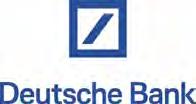
It was conceived as a proof of concept (POC) to demonstrate how a permissioned – or governed – investment servicing platform can facilitate the management of digital funds that are investing in digital assets (i.e., tokenised securities). Memento provided the technical and implementation expertise, Deutsche Bank shared functional requirements, and both parties collaborated on the platform’s design.
The remit of the POC, which completed in early 2023, was to test and demonstrate the technical and commercial feasibility of a series of key innovative features – including digital identity, embedded payment gateway, mass customisation, custody architecture, smart contracts to customise fund features and capture data for fund administration, and fund tokens – that can, in turn, lower the barrier of entry for launching a digital fund while increasing the innovative features to benefit investors and asset managers.
The infrastructure proposed by Project DAMA is designed to provide a one-stop digital fund investment servicing platform, which asset managers and their existing transfer agents, fund administrators, and custodians can plug-in-and-play, to significantly reduce the effort required to launch digital funds. At the same time, Project DAMA aims to be a platform that can facilitate investors’ access to different funds from different asset managers, as well as cater to different custodian participants and custody models, with trust anchors.
To learn more about Project DAMA and the key findings, please click here to read our white paper: Project DAMA: simplifying digital fund management and investment servicing.

expertise at your fingertips: discover BBVA Global Securities Services.







You already trust BBVA with your transaction banking needs around the world. But what about your custody and asset servicing needs?
Our in-depth market knowledge, highly qualified teams and our ability to match client needs with customised solutions, makes BBVA the perfect partner for Securities Services in Spain.
Boon-Hiong Chan
Global Head, Fund Services, APAC Head, Securities Market Development & Technology Advocacy, Deutsche Bank Securities Services

10
First-class
Creating Opportunities Find out more at bbvacib.com C/Azul. Madrid (28050) - Spain +34 913 748 352 clientrelations@bbva.com bbva.info/CIBLinkedin
Don’t Just Do Something, Stand There!
In Europe, we have been harmonising and shortening settlement cycles for years, even decades. Doing so decreases pre-settlement risk and the capital deployed to alleviate this risk. The last move (from T+3 to T+2) went particularly well. It was a while ago now. So, with the US and India moving to T+1, the spotlight falls on Europe.
Even those who are not usually interested in posttrade are asking if we should reduce our settlement cycle to T+1, or maybe even T+0. And our industry’s response has been, at best, somewhat muted.
Whilst it is accepted that shortening settlement cycles is generally good, many post-trade participants are worried that moving to T+1 may increase operational risk and costs, particularly for foreign investors. Today’s discussion regarding moving to T+1 has not changed much since the last time it was considered, when markets decided that T+2 was a better option. The advantages of T+1 are counterbalanced by the following problems -
CSD settlement processing often takes place in an overnight cycle. So with T+1 all post-trade pre-settlement processing (e.g. affirmations, allocations, matching, CCP netting) and any stock borrowing required needs to take place on the trading day
These timing issues are particularly challenging if an entity is trading in a different time zone from its location (e.g. if Europe moved to T+1, US investors in Europe would have to complete all post-trade processing in the afternoon of trading, and Asian investors would have to complete all post trade processing outside business hours)
The FX market will still be settling on T+2. So entities may have to pre-fund, borrow currencies or use less liquid markets.
The Driving Forces Behind Corporate Governance

However, these are all challenges that can be overcome. Acknowledging them does not mean that we should not move to T+1; rather it shows that we have to carefully plan how and when to do so.
Hence, the route ahead is to first engage broadly across the industry to ascertain what would have to be improved to make such a transition possible and if the changes required are reasonable for the payback delivered. Next we need a commitment that the necessary changes will be made. Then, we can put a plan in place.


This all sounds like a lot of work. Instant gratification is always tempting. It would be easier to set a date now and just hope that doing so forces the required changes. We have tried that before. However, some careful planning sounds a safer route ahead.
It is not quite a case of ‘don’t just do something, stand there’. There is plenty to get on with in the meantime to improve settlement efficiency. In fact, doing so is required for shortened settlement cycles, atomic settlement or even if we stay with T+2 for a little while yet.
To find out more, we deep dive into the regional and global key points here
Alan Cameron Head of Financial Institutions & Corporates Client Line Advisory, BNP Paribas Securities Services
In recent years, a heightened focus upon corporate governance has become evident along all links in the investment chain. ESG (Environmental, Social and Governance) responsibilities have arisen as the main catalyst for change impacting both investors and issuers. This trend is not expected to ease off and we will see ESG factors continuing to be a considerable influence on corporate governance and proxy voting in years to come. It is important to bear in mind that globally there are approximately 900 ESG-related laws with several more pending approval on the horizon.
Investors now focus more on topics such as sustainability when they are looking to invest, and issuers are aware that evidencing strong ESG credentials is not only good governance but also essential in the effort to raise capital and attract additional investors.
Investor focus on ESG continues to grow Regulations such as the Sustainable Finance Disclosure Regulation (SFDR) and Corporate Sustainable Reporting Directive (CSRD) are all designed to enhance awareness, transparency, and assurance on the key topic of sustainability for the investor community. They do this by mandating fund categorisation, audited reporting and corporate governance activity focused upon the three ESG pillars. Investors assess companies on a multitude of factors including how they act in the best interests of stakeholders, how the company image is promoted, and reputation built, and importantly how they prove that good corporate governance principles have been applied.
This assessment continues to be a focal point for investors as they continually look for solutions that improve their ability to monitor and score companies’ performance. Investors’ assessment of a company’s ESG credentials are now a vital part in their investment and voting decisions.
How can investors use ESG credentials?
There is increased shareholder appetite for proposing resolutions regarding ESG topics such as board diversity, cleaner energy, lower emissions, and carbon footprint. Voting and participation at meetings provides a platform for shareholders to air their concerns and ensure their voices are heard by the issuer community.
Recently, several large investment houses published their intention to vote against directors of large capital European companies who fail to integrate ESG performance metrics into executive pay policies. There is a likelihood that investment houses and advisors will increasingly apply similar types of ESG-related rules within their voting policies.

Evolving regulatory landscape


Despite the industry having seen significant growth in ESG-related regulations, expect more to come. Regulators are currently focused on consistency, particularly in benchmarking and ethical scores, to ensure rating agencies use consistent standards and divest from any conflicting activities, such as consulting to businesses that they rate. This is an important development to ensure investors are not being deceived by tactics like greenwashing, which involves making misleading or false information about the environmental impact of a company.
We should expect to see an even higher focus and attention towards ESG credentials. As the ability of investors and regulators to measure ESG credentials improves, the risk of exposing more examples of failed performance and greenwashing cases increases, whilst companies strive to meet consumer demand for environmentally friendly goods and services. Failure to comply with these new regulations, laws, and guidelines risks companies becoming subject to litigation such as class action cases.
The recent car emissions scandal and subsequent class actions demonstrates the risks that companies could expose themselves to. This case instigated an estimated cost in the region of 35 billion dollars, and there are more examples coming to the fore, each proving the growing importance for issuers to ensure they have a commitment to the ESG agenda.
Michael McPolin Managing Director, Market Advocacy & Business Change, Broadridge

13 12
Revolutionised Third-Party Management for Financial Institutions
Network Management
The only end-to-end Network Management platform, transforming your business to gain major e ciencies and support you in Recovery and Resilience planning.







A MYRIAD’s-Eye View: Standardisation And Resilience Themes In 2023
Since TNF London in 2022, instability in the markets and the broader financial industry has again highlighted the continued need for powerful Network Management tools, no matter the size of your institution.

Cost Management
Simplify, automate and impose tight control over complex billing processes, identifying immediate savings.
Due Diligence
We provide a quick, straightforward, controlled procedure, substantially reducing workload year-on-year, at the lowest cost in the market.
Client Onboarding
E cient and cost-e ective solutions to reduce time-to-market, enhance Client experience, providing transparency and accountability throughout the process.

Account
Work ow and Automation
Increasing complexity drives the need for automation. Improve e ciency with the integration of intelligent data across functions.
Performance Oversight
Quickly and easily monitor and assess the performance of your counterparties, tracking issues against SLAs automatically.
Reporting
Immediate and granular reporting which presents and delivers your data as intelligence, taking your e ciency, response times and proactivity to the next level.
At MYRIAD Group Technologies Ltd, we have seen an increase in inbound enquiries with firms focusing on three main needs:
• Standardisation how can we increase control and efficiency with our Due Diligence processes?
• Operational Resilience: what accounts do we have, where are they, and how do we ensure their security in the face of a crisis?
• Operational Efficiencies: how can we reduce costs, impose control and oversight and reduce workload?
Naturally, we collaborate with our clients daily to overcome all these challenges, but that does not stop us striving for better, embracing new market initiatives and regulations working with industry bodies whilst ensuring we deliver all our solutions with the highest information security standards.
Standardisation: In partnership with AFME, the market’s due diligence technology providers have created the new excel AFME SDDQ, providing users with the long-awaited interoperability and standardisation needed by Responders, supporting the deployment of an ‘any platform’ data-readable format that all due diligence technology providers will accommodate. This means that at last, the SDDQ is fine-tuned for all its users to fullest effect.
Operational Resilience provides the theme for two of the main TNF panels in Athens - as it should in these turbulent times. The keynote of the first panel asks: ‘Should there be a better industry wide alignment and communication between Network Management teams in such crisis situations?’ Indeed, there should ideally be better alignment and communication. Co-chaired by DTCC’s Alejandra Glass and MGTL’s Simon Shepherd, the ISSA Operational Resilience Working Group is currently developing a standardised questionnaire so that firms can
assess, mitigate and rapidly – but safely – recover from the impact of operational issues by leveraging a consistent methodology. Network Management departments will no doubt draw from its guidance to establish the alignment and communication this standardised approach can offer.
By extension, the Emergence of the Digital Operations Resilience Act (DORA) will be no less important in the journey towards standardisation. It imposes key requirements for ICT Risk Management Frameworks in Financial Institutions of all flavours, aiming to alleviate the risk associated with reliance upon Critical Third-Party Providers (CTPP). The Act has been in force since January this year, and will be enforced as law on 17th January 2025, not a long time in banking, so compliance with it should be a priority in the interests of increased cyber-security and resilience.
Finally, to Data Security, critical to all the above. ISO27001 accreditation is vital to all providers of data management. It means peace of mind for the Clients that rely on these providers for the security of their data, underpinning vital elements of their ICT Risk Management Frameworks. As banks are wrapped in increasingly demanding regulation, those Third Parties they employ that are certified to this standard will be an asset to their Business Continuity Management programs.
MYRIAD Group Technologies Ltd proactively supports and drives all these initiatives, dedicating itself to delivering a reliable and secure service as it assists the industry to deliver constructive and beneficial change.

 Helen Johnson COO, MYRIAD Group Technologies Ltd.
Helen Johnson COO, MYRIAD Group Technologies Ltd.

15
info@myriadgt.com myriadgt.com + 44 (0) 20 3470 0320
Looking For Efficiencies With The AFME Questionnaire
The AFME journey

When I joined Standard Bank’s Investor Services team in 2017, the AFME post-trade due diligence questionnaire (DDQ) was in its first year. I was told a standard questionnaire would make respondents’ lives easier. The number of questions we received increased by 75%. There were the early adopters, who issued the AFME DDQ together with their existing DDQs; and the ‘let’s see what this is all about’ clients who asked for completed AFME DDQs to read through.
Improvements along the way
Six years later we are now working on the questionnaire’s fifth iteration. There is no doubt that the DDQ has become slicker. In our experience at Standard Bank, as the sub-custodian for 8 out of the top 10 global custodians, we are still responding to just as many questions. All our top clients ask supplementary questions to AFME – in 2022 these averaged at 105 questions, and altogether each client asks an average of 2,157 questions.
What has also changed is the use of technology in issuing the DDQs. Six years ago, there was only one tech provider. Today we respond to DDQs on numerous different systems. All use different technologies.

Note: based on the top 18 clients in Standard Bank’s portfolio
The call for interoperability
Last year I persuaded AFME to investigate a technical standard for the AFME DDQ. We have standard questions, so why can’t we have standard tech? Why does this matter for responders? We can maintain our AFME responses in one format and be able to upload it across different platforms. The lack of interoperability introduces manual work and risks.

16
Finland’s Long Journey To T2S Is About To End
In September Euroclear Finland will fulfil its decade-long ambition to join T2S. Christine Strandberg, Head of Investor Services Banks Product Management at SEB and Ulf Noren, Client Relationship and Sales Manager at SEB, explain why it took so long, what risks the migration represents and what network managers can expect once the transition is complete.
A long-running Nordic saga reaches its denouement over a long weekend that starts on Friday 8 September with no settlements taking place for one day only in Euroclear Finland, the Finnish central securities depository (CSD). By Monday 11 September, Euroclear Finland will have moved all its CSD accounts, including those of sub-custody clients of SEB, to the TARGET2-Securities (T2S) platform, and all transactions in Finnish securities will thenceforward settle in T2S.
Network managers are relieved rather than excited
Custodian banks and their clients in Finland have worked and waited for this outcome for a long time. Euroclear Finland started preparations to join T2S in June 2012, and originally expected to complete its migration in February 2017. Once, network managers would have struggled to conceal their exasperation that a eurozone market had taken so long to accede to T2S.
Today, they are relieved rather than excited that another market will now operate in a roughly comparable way to 19 other European CSDs. With their initial hopes that T2S would yield lower settlement fees and savings on cash and collateral shattered by their experience of other markets over the last eight years, many will be thinking privately that they could afford to wait even longer.
But the chief concern of every network manager in the coming weeks will be that the migration goes smoothly. The clumsy accession of another Nordic market to T2S in October 2018, when the Danish CSD attempted an unstable “layered” compromise between its end-investor account structure and the omnibus account model of T2S, remains a discouraging memory.
The tortuous path the Finnish CSD has taken to T2S offers little to offset it. The 2012 decision to expand a corporate actions upgrade into a complete replacement of legacy systems made sense at the time – it future-proofed capacity and functionality as well as opening access to T2S – but embarked Euroclear Finland and its users on a massive, multiyear, multi-phase technology project.
It took 22 months, from the summer of 2013 to the Spring of 2015, to migrate fixed income securities on to the first iteration of the new Infinity platform (Infinity release 1). Equity securities and registration, which were scheduled to migrate in 2016, did not complete the transition (Infinity release 2) until May 2018. So a degree of anxiety about the passage of the Finnish markets into T2S (Infinity release 3) is understandable.
An anxious migration weekend awaits
The migration timetable is certainly ambitious. Over a single weekend, Euroclear Finland and its users must cancel unsettled transactions, transfer 2.3 million accounts, link securities and cash accounts, invite counterparties to re-send cancelled settlement instructions and be ready to settle a higher than usual volume of pending trades from the previous week on Monday 11 and Tuesday 12 September.
Although Finland has eschewed the main cause of the Danish debacle – leaving retail accounts on legacy systems of the CSD - it does mean the migration is huge: every CSD account will migrate and every transaction will settle in T2S. The links between securities and cash accounts must be made manually and nobody can be confident that they will work until the first batches of transactions are actually processed.
Preparations are commendably thorough. The project scope is frozen. Testing cycles and migration rehearsals are proceeding. Volume tests anticipate the knock-on effects of closing settlements for a day on Friday 8 September. Staff are being trained to use the new platform. Go-live readiness is being measured against agreed criteria across systems, vendors, users and the European Central Bank (ECB).
Infrastructurally, the timing is well-judged. The liquidity management-enhancing consolidation of the T2 Real Time Gross Settlement (RTGS) system and T2S went live successfully on 20 March this year. The long-awaited Eurosystem Collateral Management System (ECMS), which will unify collateralisation of central bank credit throughout the eurozone, will not go live before April 2024.
Yet, however favourable the initial conditions, just 78 hours will elapse between the shutdown on the Thursday night at 21.00 and the reopening at 03.00 on the Monday morning. It leaves minimal room for error corrections and delays before settlement resumes on Monday 11 September, and there is no obvious path back to the status quo ante if the worst fears are realised.
Client services will be insulated but not enhanced by the migration
SEB aims to minimise the disruption by insulating clients from as many of the migration activities as possible. There are some unavoidable changes. A night-time settlement cycle imposes new demands. Matched but unsettled instructions, which are currently recycled indefinitely, will – in line with T2S practice – now be cancelled after 60 days, necessitating reinstruction by the counterparties.
But SEB clients will not have to change their CSD and custody account structures or numbers or change their SWIFT settlement instruction message formats or update their Standing Settlement Instructions (SSIs). There will be no change to trade matching criteria (except for free-of-payment transactions), tolerance matching, cancellations or hold and release arrangements either.
On the other hand, the Finnish migration to T2S does not create that many opportunities for service enhancements. Nordic custodians such as SEB have the ability to offer a fully integrated
regional service already, despite the fact that Norway and Sweden remain outside T2S, but the benefits for clients of non-euro countries joining the ECB settlement system are naturally less compelling than they are for euro markets.
Although Norway and Sweden are unlikely to join T2S soon, the idea is under discussion in both markets. Membership of T2S is being actively canvassed in Sweden as part of the programme to harmonise the workings of the Swedish financial infrastructure with other EU countries. Discussions about joining T2S have also restarted recently in Norway.


Whatever happens, T2S remains expensive to use. Contrary to initial expectations, T2S has not cut domestic settlement or safekeeping costs, and custodians pass these on to clients. In the case of Finland, costs are further inflated by the ten-year transition period, throughout which users have paid an additional impost to fund the T2S project. From September, users will also pay the T2S communication fee.
The universal dissonance of T2S is particularly marked in the Nordic markets
The degree of harmonisation with T2S standards will – as elsewhere – be lower than the ECB intends. In Finland, the main divergence is the continuing payment of cash dividends in commercial rather than central bank money, partly to prevent a new tax regime disrupting the migration, partly because issuers are opposed and partly because mistakes in payments are awkward to reverse in retail accounts.

So the Finnish migration to T2S will not be complete even on 11 September 2023. Indeed, Euroclear Finland told the Advisory Group on Market Infrastructures for Securities and Collateral (AMI-SeCo) in January that it does not expect to comply with T2S corporate actions standards until December 2029. After 11 years of postponements, an end to promises is prudent. But there is another reason to reserve judgment.
The European securities services industry has learned an important lesson from the Danish and Finnish migrations to T2S. It is that a settlement platform based on the indirect holdings model of western European CSDs is hard to adapt to the Nordic direct holding model, in which millions of accounts are held and tens of thousands of them are amended and opened and closed every year.
19 18
Shareholder Engagement And Transition To Sustainability In The New Adoption
The General Assembly season, which is the time of the year when many organisations and corporations hold their annual shareholder meetings or AGMs, is ending. During these meetings, the company’s owners (the shareholders) ratify decisions on topics such as past financial performance, future strategy, leadership change and, more recently Environmental and Social strategies.
IIn recent years, Asset Owners and Financial institutions have increasingly been making climate commitments and have wanted to ensure that the votes in AGMs reflect their ambitions and, by extension, their clients’ ambitions.
Therefore, after many “Say on Pay” resolutions submitted over recent years, shareholders as well as civil society organisations are now increasingly using AGMs to push for climate-related resolutions to be voted, such as “Say on Climate”. With more than 50%* of the global Gross Domestic Product (GDP) now dependent on biodiversity, will we soon see “Say on Biodiversity” resolutions increasing?
Asset Managers’ active voting role

Asset managers (AMs) play a crucial role in shaping corporate governance and driving these sustainability initiatives, as a consequence of their own convictions or as a result of pressure from their investors. Their participation in Annual General Meetings is up by 10%. Furthermore, two thirds of Asset Management companies have increased their participation in the AGMs of non-European issuers, and the volume of their participations is up significantly (+20%)**.
Asset Managers’ engagement role
Engagement is another crucial aspect of the asset manager’s role. By engaging with companies – either individually or collectively – AMs can influence decision making and advocate for changes that are aligned with their investment strategies and sustainability goals, or at least relinquish poor practices. Some common engagement strategies include active dialogue with targeted objectives to achieve change.
Asset servicers’ facilitation role
Asset servicers play a key role both in organising AGMs and in facilitating the voting process.
On the one hand, they act as a centraliser for collecting and checking voting instructions before consolidation and reporting to the corporate board. They can also provide the operational framework on the day of the AGM itself.
On the other hand, Asset Servicers provide a range of services to stakeholders ensuring their rights are protected and ensuring they can exercise those rights effectively.
Their role ranges from the identification and the notification of general meetings, and the accurate communication of eligible positions and voting rights, to the possible choice of a proxy advisor, as well as execution and, lastly, reporting.
Overall, the asset servicers will ensure that the stakeholders have the information and tools they need to participate effectively in the company’s decisionmaking process.
Societe Generale Securities Services (SGSS) is an active player in this process, providing access to 40+ markets, 19 proxy advisors, and routing 300,000+ voting instructions!
What next?

At SGSS, we feel that the Industry may have a bigger role to play in the coming years to foster shareholder participation in corporates’ strategies in terms of sustainable development. We are capable of bringing added value to our clients through partnerships and solutions, not only to assist asset managers in fulfilling their role as shareholders, but also to include asset owners in the process among other possible solutions.
Operational Resilience: What Have U-Boats Got To Do With It?
Russia’s invasion of Ukraine has put geopolitics firmly back on the agenda. But, as we have seen, geopolitics and cyber risk are now inextricably linked. Hybrid warfare, not hybrid working, should be top of Network Managers’ agendas.
In 1942, eight German saboteurs rowed ashore on America’s East Coast, hitting land at Long Island and Miami. They had been dropped offshore by U-boats sent by Abwehr high command. Their mission? To destroy key economic infrastructure: hydroelectric plants in Niagara Falls; an aluminium company; locks on the Ohio River; a crucial piece of Pennsylvania’s railroad; and Pennsylvania Station itself. They wanted to take America out of the war, or at least demoralise its people enough to provoke civil unrest.
Hybrid economic warfare is nothing new, but the tools at malicious actors’ disposal are constantly evolving. In May, senior leaders from CSDs around the world met in Prague for the World Federation of CSDs. When they were asked “Which potential cause of systemic risk most concerns you in your market?”, 63% chose ‘cyber-attack’.


Managing Risk with Thomas Murray
Due diligence must never be a tick-box exercise. When banks fail, internal controls and procedures tend to break down as managers try everything to save the entity. When countries go to war the laws and regulations which govern asset ownership, liquidity and cross-border transactions are changed at the drop of a hat. Third Party Risk Management is about cutting through the PR and understanding fundamental risk.
Fouad Massabni, Head of ESG Commercial Offer, Societe Generale Securities Services

The cyber threat to capital markets is no longer theoretical. At the WFC, Oleksii Yudin, Chairman of the National Depository of Ukraine (NDU) described the wave of cyber-attacks that NDU suffered in the first weeks of the war. This, combined with the physical threat to NDU’s data centres in Kyiv, posed a serious threat to NDU’s mandate for asset safety in Ukraine. “A CSD cannot be allowed to fail under any circumstances,” said Yudin, because shareholders have a right to their property. NDU rapidly moved a data centre to western Ukraine and set-up cloud DR, if the first days of the war had gone differently, who knows how long it would have taken to recover records of holder rights.
Orbit Risk is the only comprehensive solution for Network Managers to monitor risk centrally. Orbit Diligence automates and digitised the DDQ process, Orbit Security allows you to monitor companies’ cyber security posture with data-driven ratings, and Orbit Intelligence gives you access to Thomas Murray’s unique suite of post-trade risk assessments, validated with on-the-ground due diligence, and realtime market intelligence from our unique network of support banks.
We are proud to be using the TNF Annual Meeting 2023 to formally launch our Cyber Risk Advisory practice. Join our cyber security experts at 8am on Thursday, 22 June to find out ‘How to break into a bank (and not get away with it)’.
 Roland Thomas Associate Director Thomas Murray
Roland Thomas Associate Director Thomas Murray
*Source: World Economic Forum - Nature Risk Rising: Why the Crisis Engulfing Nature Matters for Business and the Economy World Economic Forum (weforum.org)
**Source: AFG Study Exercice des droits de vote par les sociétés de gestion en 2022 (afg.asso.fr)
21 20
A Recipe For Success In Transformation Digital Proxy Voting Starts In South Africa

It’s reported that 70% of transformation programs fail. How can organizations defy the odds and undertake an automation and innovation discipline that delivers real business value? While every organization is different, there are a few common ingredients required in any transformation recipe.
People
Talent is one of the most critical ingredients to a successful transformation program. Identifying the right people to lead and support your transformation program, who are aligned on business value and accountable for meeting objectives, are essential first steps.
How to construct an effective transformation team:
1. Build a multi-disciplinary digital business team that sits horizontally across the organization. Their holistic vantage point across complex programs will ensure solutions are designed with maximum re-usability.
2. Appoint a dedicated IT team skilled in emerging technologies. This team should be creative and approach problem solving through a clear lens, using new and emerging technology solutions.
3. Align Subject Matter Experts (SMEs) who are responsible for achieving transformative outcomes as a primary responsibility. Automation and innovation should not be side gigs to existing operational duties. SMEs are vital in providing the business and industry knowledge that ensures the solutions achieve the intended results.
Technology
Intelligent automation platforms made up of microservices are accelerating transformation programs everywhere. Gone are the days of costly and timeconsuming overhauls and replacements of legacy enterprise solutions.
How to accelerate your transformation program:
1. People and Platform: Selecting the right technology platform is not enough. Automation platforms put capabilities into the hands of business users through a democratized approach, that together can quickly solve for shifting business dynamics, client demands and market practice. User configurable technologies bring innovative solutions closest to those who are best versed in the challenges that need to be solved.
2. Data: Underpinning your technology stack with a clear data strategy that is pragmatic and solves business challenges is key. Process and transformation
teams need unfettered access to quality data to successfully deliver on automation strategies. Understanding where your data is coming from, its lineage, quality, and accuracy is critical.
3. Governance: Building a governance framework is an essential tool for evaluating when to leverage an automation platform versus other technology solutions. Bring together experts from Product, Systems, Data Management, Risk and Control to evaluate tool selection, data sourcing strategy, design, and scale through a repeatable and scientific governance program.
Measuring Success
Measuring productivity or reduction in FTE is often the default metric many transformation programs use to define program success. This output-based approach can be problematic. Instead, you should focus on an outcome-based approach that leads to longer term benefits such as new idea generation, improved client experience, and advanced analytics.
Important ROI measures:
• Enabled capacity
• Simplified architecture
• Reduced deployment costs
• Risk reduction
• Client experience
• Accelerate organizational placement
• Workforce upskilling
Once measures are agreed upon, progress and tracking should be highly transparent to the stakeholders and the organization.
The Takeaway
Transformation must start with an organization’s most important ingredient: its people. Layer in the right technology and focused measurement to defy the industry odds with a successful transformation project.
Catherine Dawson Senior Vice President, BBH Kevin Welch Principal, BBH
A combination of technology developments and Covid-19 proving AGMs don’t have to be physical, e-voting in Africa is making significant strides.
Palesa Banda, Head of Custody Product at Standard Bank South Africa explains how e-voting is taking shape in South Africa.
Proxy voting process in Africa has several challenges hindering its effectiveness and inclusivity. Weaknesses and inconsistencies are notable in the election and voting administration across the value chain, which may include inaccurate shareholder lists, delays and omissions in vote distribution and incomplete vote tabulation. These issues are an outcome of out-dated voting processes across Sub-Saharan Africa.
Move away from manual processes
The current proxy voting process in South Africa is largely manual. Votes are not all cast electronically and the dissemination of votes via intermediaries is still executed on spreadsheets. Embedded in the manual process are operational and market risks that ultimately impact the beneficial shareholder. To achieve operational efficiency and to mitigate risks of voting errors or missing response deadlines, a shift to electronic voting platforms and digitised voting means is warranted.
The SA market is shaped by a highly regulated environment, clients continue to seek increased transparency for shareholder governance and disclosure.
New systems and collaboration bring change
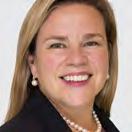
This is changing as new systems enable electronic voting, proxy delegation and better voting deadlines within the value chain. Investors are looking for faster and digital access to proxy announcement and a secure voting process which ensure inclusion of every vote and confirmation to shareholders. In addition, there are demands for a streamlined voting for multi-banked asset managers / owners on a single platform that provides real-time, transparent data with audited vote tracking.


Developments in the SA market
In 2019 the CSD, Strate, launched an electronic voting platform and hosted its first AGM via e-voting. Service providers such as Broadridge and Proximity are
responding to the call to move to electronic voting as seen in the recent launch of electronic platforms and enhanced proxy voting processes. Standard Bank is a big advocator for fully digitising the voting environment and took the lead as the first custodian to partner with Strate to enable electronic voting for one of the largest asset managers in 2021. In 2022 Standard Bank partnered with Broadridge to successfully test proxy voting integration that will achieve an end-to-end processing to create a better voting experience and better voting deadlines for clients.
Key features of robust e-voting applications:
• Remote voting
• Voting rights delegation
• E-voting for certificated and uncertificated securities for local and foreign listed firms

• Support complex account structures
Investors embrace the change
It is with the Covid-19 pandemic that markets witnessed a shift towards more electronic means of exercising votes. In several African markets, we observed the relaxation of restrictions associated with physical meeting attendance and a greater inclination for virtual meetings. Domestic investors are seeing the possibilities of change and ready to adopt global best practices to bring higher level of shareholder participation resulting in better corporate governance in African markets.
Standard Bank is the leading custodian in Africa by assets under custody with experienced on-the-ground experts in 14 markets. The bank is leading several advocacy initiatives to improve proxy voting across its markets.
 Palesa Banda Head of Custody Product at Standard Bank, South Africa
Palesa Banda Head of Custody Product at Standard Bank, South Africa

23 22
The Message From Joburg
Three years ago, TNF was forced to hastily abandon its Africa Meeting (albeit not in time to prevent a handful of people arriving in Johannesburg first) as the severity of COVID-19 became startlingly apparent. In the weeks that followed, South Africa implemented one of the world’s strictest lockdowns, even going so far as to ban the sale of alcohol and tobacco.
Today, the relative normality in Johannesburg makes it feel like COVID-19 never happened, a sentiment echoed by several attendees at TNF.
So what were the biggest talking points to emerge from TNF Africa?
Load Shedding
For South Africans right now, load shedding is now a normal part of life. For the uninitiated, load shedding is a term which refers to the periodic shutting down of the energy network in certain geographical areas for several hours at a time to reduce demand, thereby preventing the country’s entire power infrastructure from collapsing altogether.
Critics – including the Former (and very nearly assassinated) CEO of Eskom - have highlighted that the South African government’s reluctance to invest in ageing coal fired power stations, along with rampant corruption and industrial scale theft by criminal syndicates of coal and infrastructure, are to blame for the chaos.
Although the rolling blackouts plunged TNF into momentary periods of darkness, the disruption was short-lived as the Maslow Hotel’s backup generators kicked into action within a minute.
While most major businesses in South Africa can afford petrol powered generators or solar panels to mitigate the impact of these outages, this is a luxury which is not available to everyone. Until this ongoing debacle is resolved, South Africa’s economy will struggle to grow - and realise its true potential.

A digital asset stranglehold in Africa
Just as TNF Asia took place barely days after FTX imploded, TNF Africa occurred in the aftermath of the failure of Silicon Valley Bank and crypto lender Signature Bank, two events which have sent shockwaves throughout the digital asset market.


So what impact is this having on African markets?
Although most major institutional investors are steering well clear of crypto-currencies, they are open to the idea of trading regulated digital assets such as security tokens. This is evidenced in a TNF survey which found that 80% of providers are seeing more demand from African clients for digital asset services. There is also growing consensus among industry leaders that African regulators need to follow the EU’s example with MICA (Markets in Crypto Assets Regulation), and introduce some sort of supervisory regime overseeing digital assets.
ESG does not escape Africa
If recent analysis by PwC is to be believed, then 21.5% of all global AUM (assets under management) – corresponding to roughly $33.9 trillion – will be invested in ESG-focused asset managers by 2026.
The problem with ESG, however, is that nobody can seem to agree on what it is exactly, an existential shortcoming which has allowed greenwashing to proliferate. The problem is exacerbated by the abundance of different ESG industry standards together with the conflicting ESG scoring methodologies used by different ratings agencies.
Regulators are taking note. For instance, some markets are introducing their own ESG taxonomies designed to help investors benchmark which particular economic activities are green or not. The EU has adopted a very prescriptive taxonomy model, while South Africa has unveiled its own voluntary taxonomy making it the first country in Africa to do so.
Herein lies another fundamental problem in that regulators are now developing byzantine rules and taxonomies, which are not harmonised. This is going to make ESG investing even more complicated and further increases the risk of greenwashing.
Speaking on the fringes of TNF, several attendees acknowledged that ESG regulations and standards globally are a mess, and this is likely to erode investor confidence in the market.
Will T+1 come to Africa?
India’s phased adoption of T+1 settlement for equities appears to have gone reasonably smoothly, while all eyes are now fixated on the US and Canada, both of whom plan to introduce
T+1 in May 2024.
Other markets – including the UK – are consulting on T+1, although the EU is probably going to wait until the CSDR’s Settlement Discipline Regime delivers tangible results on settlement efficiency before taking any further action.
The T+1 debate has not bypassed Africa. While experts from several African countries said they are not opposed in principle to the idea of T+1, Nigeria is the only market in the region which is proactively talking about adopting it, having reportedly established a committee to investigate whether there is any value in shortening the settlement cycle.
Not everyone is convinced that T+1 is strictly necessary. One market participant said South Africa currently has no plans to adopt T+1, adding the existing infrastructure would not be able to cope with the change.
As to whether more African markets follow the Nigerian example on T+1 remains to be seen, but for now it seems most countries are in favour of retaining the status quo.
Charles Gubert Founder, GTL Associates

25 24
SIT BACK, RELAX AND ENJOY THE TRADE.

Experience peace of mind with our streamlined post-trade securities solutions.
We simplify local, regional and global post-trade securities solutions with single contact access. Our end-to-end solutions offering extends from trade execution through to reporting and analytics.
Delivering True Competition And Innovation In Europe’s Post-Trade Markets
Europe’s post-trade industry is facing a pivotal moment in its development, as market structure and regulatory changes reshape the competitive landscape and the impetus grows behind the adoption of new technologies and product innovations that can deliver even greater levels of efficiencies.

At Cboe Clear Europe, we’re excited by these shifts in the landscape, which create opportunities for us to continue to innovate, expand into new services and deliver on our vision to be Europe’s leading multi-asset clearing house. Our focus in this regard is aimed at benefitting market participants and end investors, and advancing UK and European capital markets.
We have always viewed ourselves as a ‘positive disruptor’, which thrives during times of change through a relentless focus on exceptional levels of client service, risk management and ongoing investment in client-led innovation. This remains as true now as it has ever done, as does our fundamental belief in open, competitive, and efficient pan-European market infrastructures.

There is no doubt that a competitive market structure is under threat in cash equities, as some of Europe’s national stock exchanges revert to a reliance on their own clearing provider. Such moves risk curtailing the significant progress the industry has made towards expanding access to competitive clearing, with undoubted benefits in terms of costs and other efficiencies.
These changes have simply reinforced our belief that a truly competitive clearing environment should be viewed as a key element of the EU’s efforts to revitalise its capital markets vis-à-vis other developed markets, helping to attract investors and reduce the costs of investing.
And rather than dissuade participants away from clearing choice it has focused their minds, as evidenced by the continued growth in both interoperable and preferred clearing services. The latter is used when both sides of a trade wish to use alternative CCPs, rather than the primary CCP, helping to bring about a competitive clearing environment where full interoperability does not exist. We continue to see an increasing uptake for our preferred clearing service, and now clear around
17% of volume on Euronext markets in Amsterdam, Brussels, Lisbon and Paris, and 10% on Euronext Milan.
Furthermore, we’re increasingly applying these principles beyond cash equities and into new markets, offering market participants improved capital and operational efficiencies through clearing.
We diversified into derivatives clearing in 2021 in support of Cboe Europe Derivatives (CEDX), a panEuropean equity derivatives marketplace, and will be supporting its expansion into single stock options in November 2023. Through CEDX, we are seeking to bring the same levels of positive disruption to equity derivatives, by offering participants meaningful cost savings and capital efficiencies via the ability to clear a broad range of pan-European equity derivatives at a single CCP. With the introduction of single stock options, the use of underlying stocks to provide offsets against matched equity option positions will also be available. We estimate this equates to a potential initial margin reduction for a covered call position of around 70%.

Furthermore, we also recently announced our plans to introduce a first-of-its-kind central counterparty clearing service for European Securities Financing Transactions (SFTs) in Q3 2024, subject to regulatory approvals. Cboe Clear Europe’s SFT clearing service will transform the current bilateral process between Lenders and Borrowers into a cleared model, helping to bring improved capital efficiencies, enhanced risk management and streamlined operational procedures to this important market.
These are natural extensions of our business and a clear demonstration of our commitment to innovation, partnership and collaboration to support the growth of the markets in which we operate.
Vikesh Patel President Cboe Clear Europe

27 CORPORATE AND INVESTMENT BANKING
a division of FirstRand Bank Limited, is an Authorised Financial Services and Credit Provider NCRCP20. Terms and conditions apply.
Paradise Found
time, but with „nature” as, in these special weeks, the sun only dips into the horizon between 2 and 3 in the morning. With this, after just a few days, you learn that normal routines in our day to day lives are actually „forced” routines and, if you listen to your body, and eat and sleep only when it tells you to, you will become much more at peace. It is exactly this peace, along with medatative affects of casting flies into rivers, which has become a balancing point and much-needed staple in my annual planning.
In the Summer of 1996 I was blessed with two special moments, both of which would change my life forever. The first was the marriage to my beautiful wife who, being half Swedish, endulged my naivity to her homeland by suggesting an extended honeymoon visiting friends and relatives throughout the country.
On this 2-month tour (yes, I was then unemployed), visited Jämtland and the „village” where her Grandparents had lived, Ösjön. Village is relative in definition as, in this context, there are a whopping five houses competing for a space on multiple lakes which, in Austria (where I reside) would see thousands of houses crowded along the banks. The largest „town” is a one and a half hour drive over dirt roads called Hammarstrand and, in that Summer of ’96, on my first visit, was greeted by the unexpected surprise of one of my favorite bands, Creedence Clearwater Revival (CCR), playing an evening concert for a group of spectators of around 500 people .. but I divert.
The concert was the perfect opening to the next adventure which awaited, namely my first trek through the woods to the family cabin on the Gimån River. My wife and I were joined by her brother who, at 18, then introduced me to his favorite hobby, fly fishing.








This was the second enlightenment of that Summer which, now 27 years back, has become my true passion ever since, honed but never „perfected” through the invaluable patience and skills passed on to me by both my brother-in-law and father-in-law, both masters in this skill. In fact, I have only missed one single Summer in all those years where I did not return to that magical place, and that was due to the recent pandemic.
Now to the actual fishing part. Fly fishing is an art which takes a day to learn and a lifetime to master. Casting is actually the easiest part; but learning how fish „think” is the toughest part in understanding where and how to catch them. There are multiple components to a perfected strategy which include studying the types of insects currenty in and around the water and matching these to the flies which are used. Also whether or not to use floaters or sinkers, the weight of the rod and the lines used, the height of the water and its clarity and weather conditions are all very important considerations. But once you have all of this prepared, you then need to then understand the current of the river and the position a fish would put itself in to feed off of downward floating nurishment.
But, again, all of the above leads to only one state: calmness. It sometimes takes several days to reach this state (especially after a closing TNF party) but once it’s reached, you feel a relaxation that can easily negate weeks or even months of stress in just a short time. As an added bonus, should your strategy play out, you’ll be awarded with a nice fish for dinner. In my case, of course, an „enormous” fish. Should you catch a small fish (which never happens to me), the best part about fly fishing is that most hooks do not contain barbs and, for that reason, you can safely „catch and release” a fish back into the water without injury, allowing them to grow into bigger fish .. which I would then catch the following year.
Now, while many of you may believe that the passion of fishing has to do with catching fish, would argue that you have never truly „fished.” The passion that evolved from that Summer had little to do with actual fishing but all to do with everything which sorrounds it. From that first walk through the woods to entering a mecca of calmness where there are no people, no networks, no electricity, no plumbing (J) .. you become encapsulated into a world where your one and only focus points are fishing, eating and sleeping. And, since travel mainly in late June to early July, the normal rythms of these activities are no longer synced with
Sven Trahan MD, Deputy Global Head of Securities Services UniCredit


29 28
My name is „Sven” and I love Sweden ... but I am not Swedish! This is the common response I give when introduced to Swedes who, in turn, immediately and rapidly start speaking Swedish to me.
Now, to all you Swedes who may be reading this, although I still cannot „speak” Swedish, do not underestimate my level of comprehension when you proceed to laugh about my embeleshments of grandour. I am „Sven” .. och jag har funnit mitt paradis i ditt land!
Middle East 2022 Asia 2022



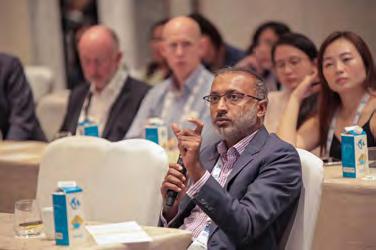

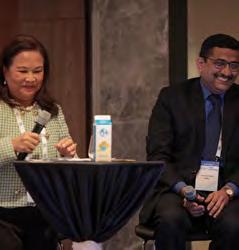


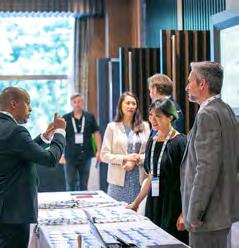













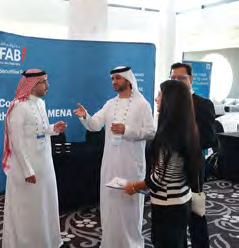
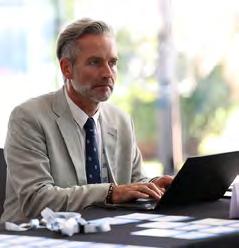



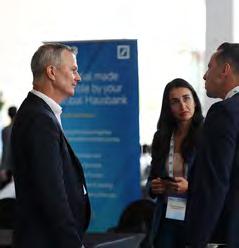
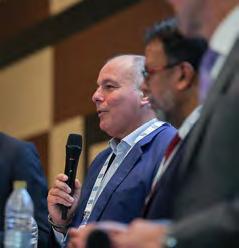



31 30
www.thenetworkforum.net/home/events



NEW YORK MUSCAT MUMBAI
It is with great pleasure that we reconvene in person with our friends and business associates in the Muscat for two days in October. This Meeting, held annually in GCC, is the key gathering point for over 100+ capital market leaders from post-trade, asset management and servicing, investment banking and custody backgrounds.

See you in Muscat!
We are looking forward to retuning to NYC for our Americas Meeting. Once again congregating with 100+ network managers, COOs, direct custody providers, CSDs and FinTech innovators at the Americas essential post-trade and custody industry gathering. As expected, our core focus will be curating the essential dialogue of how to face the future together, by focusing on the key areas of growth, and also challenges, that the market faces.

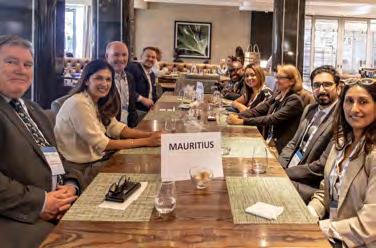

See you in New York!
We are delighted to host our first Asia Meeting in Mumbai. With India’s outstanding economic growth recently, this is one not to be missed! We expect well over 130+ network and asset managers, direct custody providers, CSDs and FinTech innovators at the wider region’s essential post-trade and custody industry gathering.


See you in Mumbai!
The Network Forum can help you connect and interact with our community. Contact Edward Jones on ejones@thenetworkforum.net with your ideas.






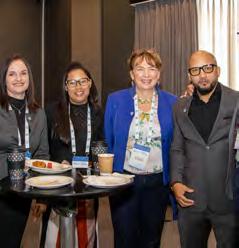





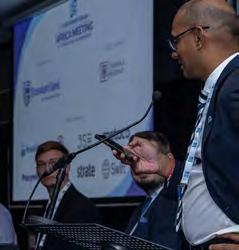


33 32
Africa 2023 2023 FUTURE EVENTS












































 Helen Johnson COO, MYRIAD Group Technologies Ltd.
Helen Johnson COO, MYRIAD Group Technologies Ltd.






 Roland Thomas Associate Director Thomas Murray
Roland Thomas Associate Director Thomas Murray



 Palesa Banda Head of Custody Product at Standard Bank, South Africa
Palesa Banda Head of Custody Product at Standard Bank, South Africa
































































